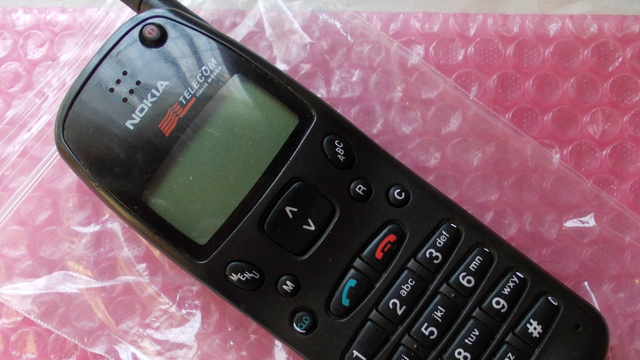Your old Nokia sucked: here's how much better phones have become in 20 years
No wonder everyone was miserable in the 90s: just check these specs!

Smartphones are a relatively recent invention: the first so-called smartphone, Ericsson's R380, didn't ship until early 2000. In the 1990s phones had modest specs, proprietary operating systems and the ability to make and receive phone calls, sometimes.
Today's phones haven't improved much on the calling front - for all their noise cancelling and cleverness, they still drop calls like they're hot - but everything else has changed dramatically in just 20 years.
The numbers have changed too. In 1994 Motorola was pretty chuffed about selling 12 million handsets in a year. Today, Apple can do 10 million iPhones in a weekend. So what else has changed? Let's go back. Wayyyyy back.
Nokia 232 (1994) vs Moto X (2014)
When we think of early nineties mobile phones the Motorola 8000X brick phone tends to spring to mind, but while that behemoth looks so odd now was indeed on sale back in 1994 there were more interesting and much smaller phones such as Nokia's excellent 232.

The Moto X in 2014 is very similar to the Nokia 232 in 1994: it's not too pricey and it delivers a lot of power for the price. Of course, what power means in 2014 is a bit different from what it meant twenty years ago. Let's see what's really changed in two decades.
Design
Frank Nuovo's design for the Nokia 232 was intended to be futuristic, and at the time it was: the neat, compact design was aimed at style conscious customers and even featured in the film Clueless.
The 232 won a stack of design awards and, inspired by Swatch watches, was the first phone to ship in a range of colours - although the cost of phones at the time meant most people stuck with plain old black instead of having different phones for different outfits.
Sign up for breaking news, reviews, opinion, top tech deals, and more.
Phones are a lot more homogenous today - there's only so much you can do with an enormous touchscreen, a camera and a couple of hardware buttons.
The Moto X mimics the Nokia in its customisation options: you can choose the back and front colours, the trim and even encase your phone in real wood. But there's no mistaking the huge changes phones have gone through in 20 years: in today's phones the software, not the hardware, is the real star.
Display, Interface and Operating System
The Nokia 232 had a 16-digit LCD display with additional indicators for signal strength, battery life and key features such as whether you were in a call or if somebody had left you a voicemail.
The phone ran Nokia's own proprietary operating system and was controlled with the keypad - so for example to experiment with the extensive selection of five ringtones you'd hit MENU, 2, up or down and STO to confirm the setting.
The Moto X has a 5.2-inch, full HD AMOLED display delivering 423 pixels per inch and protected by the third generation of Corning's Gorilla Glass.
The display is a touchscreen, the operating system is Android KitKat and there is a 2MP front-facing camera and a 13MP rear-facing one capable of recording Ultra HD video.
The user interface is customisable and via apps the phone can pretend to be anything you want it to be, from a musical instrument to a sensible tool. It's controllable by voice too.
Connectivity
Forget 4G: the Nokia 232 was 1G and ran on analogue phone networks known as AMPS (Advanced Mobile Phone System) in the US and TACS (Total Access Communication System) in the UK.
Those analogue networks were prone to noise and interference, easy to intercept and generally rubbish, and analogue phones were easy to clone too.
You could receive 14-character messages to notify you of missed calls and use DTMF tones to make choices on automated switchboards, and you could also use the Nokia 232 as a modem, although that required a separate data adaptor or car kit.

Contributor
Writer, broadcaster, musician and kitchen gadget obsessive Carrie Marshall has been writing about tech since 1998, contributing sage advice and odd opinions to all kinds of magazines and websites as well as writing more than twenty books. Her latest, a love letter to music titled Small Town Joy, is on sale now. She is the singer in spectacularly obscure Glaswegian rock band Unquiet Mind.